Llyn Y Dywarchen – Enigmatic Lake Shrouded In Myth And Legend
Jan Bartek - AncientPages.com - The world is full of wonderful, beautiful, and mysterious places. One of them is a lake called Llyn Y Dywarchen. Located in Gwynedd, at the top of a valley in Snowdonia, Northern Wales, the lake is shrouded in myth and legend.
Riddle Of The Floating Island
It has long been said that Llyn Y Dywarchen,' the lake of the Turf Island,' is home to a floating island.
Llyn y Dywarchen above Rhyd Ddu in Snowdonia - Credit: Richard Outram - CC BY 2.0
The first mention of the puzzling floating island comes from Giraldus Cambrensis (1146 -1223), a writer and historian of the early Middle Ages. While journeying through Wales, Cambrensis reached Llyn Y Dywarchen, where he was surprised to see a floating island on the beautiful lake. In 1188, he described the lake as "having a floating island in it which is driven from one side to the other by the force of the wind'. Cambrensis suggested the island was probably made of turf. He also speculated that the landmass had detached itself from the lake's bottom, and gasses, such as methane, kept it floating.
Sightings of the floating lake continued, and more people reported seeing a large landmass moving freely across the waters. Finally, in 1698, astronomer and scientist Edmund Halley swam out to the island to confirm it did indeed float. It did.
Thomas Pennant (1726 1798), a Welsh naturalist, traveler, writer, and antiquarian, was very interested in geology. He stated he had spotted the floating island. According to his observations, sometimes the lake came very close to the shores, and cattle believing this was ordinary land, strayed upon it. When the island drifted away from the shore, the animals were occasionally stranded because they could not return to the mainland.
Cambrensis's first account of the floating island was accurate, which was later confirmed by other people who witnessed the same thing. Therefore, his explanation concerning the floating island was also rational. Furthermore, modern science has confirmed floating islands exist and are a common natural phenomenon found in many parts of the world.
Llyn Y Dywarchen - A Portal Of The Fairies
Llyn Y Dywarchen's floating island is not the only thing that makes the lake unique. The beautiful and mysterious lake is also associated with interesting legends and myths. Many say peculiar beings have been spotted around this place.
The belief in fairies has long been widespread in some European countries such as Iceland, Ireland, and the United Kingdom. In Welsh folklore and mythology, the term Tylwyth Teg (Fair Family) is the term that describes mythological creatures known as the fairy folk of English and Continental folklore. Many stories from Wales tell of fairies that live near lakes, and Llyn Y Dywarchen is believed to be a portal to the fairyland.
One legend tells of a young farmer man who one day met a fairy woman there. He found her attractive, and she agreed to become his servant if he could guess her name. The man cheated. He eavesdropped on a fairy conversation and learned her name was Bela.
It is said that some who entered through the portal leading to the land of the fairies never came back. Credit: Adobe Stock - Kanea
Bela had an excellent connection with animals, and flocks loved being around her. As time passed, Bela told the man they could marry but only if he never touched her with iron. The couple had children and seemed to be happy, but then, a disaster happened. The young man accidentally tossed Bela a bridle, and she vanished instantly into the lake. Bela was no longer allowed to walk the earth.
Llyn Y Dywarchen has long been regarded as a meeting place of the fairies. Another legend tells of a man who spotted a group of fairies having a meeting at the lake one evening. As they danced, they invited him to join them, and he was transported to the mysterious land of the fairies, from which it took seven years to return. This particular Llyn Y Dywarchen reminds a little of Brigadoon, a mythical village in Scotland where time stands still. "People who visit Scotland often ask where they can find the mysterious and beautiful village of Brigadoon.
It's a place where the passing of a century seems no longer than one night. The village is hidden somewhere in the Scottish Highlands, and it appears every hundred years for just one day." 2
There are many fairy legends associated with the beautiful lake in Wales.
Buddhist Pilgrimage To Llyn Y Dywarchen
One may think a lake like Llyn Y Dywarchen is almost unknown to most, but that is not entirely true. Many years ago, Buddhists from The Hermitage of The Awakened Heart visited the lake where they performed rituals and mantra. The lake was blessed with prayers. According to Buddhists in Wales, there is "a strong connection between this site and Guru Rinpoche. The Welsh word Dywarchen sounds remarkably similar to the Tibetan name for the Pure Land of Buddha Amitabha – Dewachen." 1
Nominated as one of the 60 Wonders of Snowdonia, Llyn Y Dywarchen is today mainly used by fishermen, but beliefs in fairies persist.
Updated on June 26, 2024
Written by Jan Bartek - AncientPages.com Staff Writer
Copyright © AncientPages.com All rights reserved. This material may not be published, broadcast, rewritten or redistributed in whole or part without the express written permission of AncientPages.com
Expand for referencesMore From Ancient Pages
-
 Jedek: Previously Unidentified Language Found By Swedish Linguists In in Southeast Asia
Linguistic Discoveries | Feb 9, 2018
Jedek: Previously Unidentified Language Found By Swedish Linguists In in Southeast Asia
Linguistic Discoveries | Feb 9, 2018 -
 Unexplained Historical Mass Disappearances – Where Did They Go? – Part 2
Featured Stories | Jun 4, 2019
Unexplained Historical Mass Disappearances – Where Did They Go? – Part 2
Featured Stories | Jun 4, 2019 -
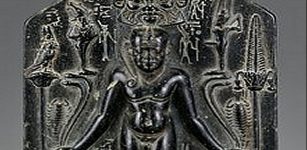 Miniature Magical Stela Of God Horus-Child Standing On Crocodiles Protected Against Wild And Poisonous Creatures
Artifacts | Aug 16, 2019
Miniature Magical Stela Of God Horus-Child Standing On Crocodiles Protected Against Wild And Poisonous Creatures
Artifacts | Aug 16, 2019 -
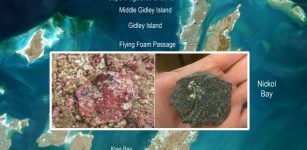 9,000-Years-Old Underwater Artifacts Found Off The Western Australia Pilbara Coast – Protect Flying Foam Passage Scientists Say
Archaeology | Jun 27, 2023
9,000-Years-Old Underwater Artifacts Found Off The Western Australia Pilbara Coast – Protect Flying Foam Passage Scientists Say
Archaeology | Jun 27, 2023 -
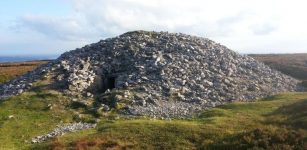 Ancient Irish Practiced Special Burial Rituals Such As Dismemberment Of Bodies
Archaeology | Sep 18, 2017
Ancient Irish Practiced Special Burial Rituals Such As Dismemberment Of Bodies
Archaeology | Sep 18, 2017 -
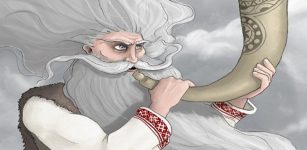 Stribog – Slavic God Of Winds Associated With Destruction, Harvest, Evil And Good
Featured Stories | Jul 1, 2019
Stribog – Slavic God Of Winds Associated With Destruction, Harvest, Evil And Good
Featured Stories | Jul 1, 2019 -
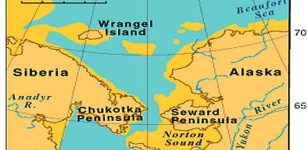 A Scientific Surprise: Bering Land Bridge Formed Late During Last Ice Age
Archaeology | Dec 27, 2022
A Scientific Surprise: Bering Land Bridge Formed Late During Last Ice Age
Archaeology | Dec 27, 2022 -
 Island Archaeology Could Be A Model For Space Exploration
Archaeology | Nov 14, 2022
Island Archaeology Could Be A Model For Space Exploration
Archaeology | Nov 14, 2022 -
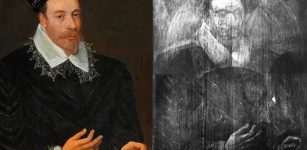 X-Ray Reveal Ghostly Portrait Of Mary Queen Of Scots Hidden Underneath 16th Century Painting
Archaeology | Nov 3, 2017
X-Ray Reveal Ghostly Portrait Of Mary Queen Of Scots Hidden Underneath 16th Century Painting
Archaeology | Nov 3, 2017 -
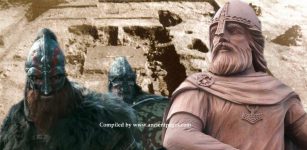 Viking Ivar The Boneless Could Be Buried In Repton – Remarkable Viking Burial Holds Clues To Where Ragnar Lodbrok’s Son Died
Featured Stories | Jun 17, 2022
Viking Ivar The Boneless Could Be Buried In Repton – Remarkable Viking Burial Holds Clues To Where Ragnar Lodbrok’s Son Died
Featured Stories | Jun 17, 2022 -
 Aluminum Was Used At Least 7,000 Years Ago – Long Before The Metal’s Official Invention In 1825
Ancient Technology | Jul 10, 2017
Aluminum Was Used At Least 7,000 Years Ago – Long Before The Metal’s Official Invention In 1825
Ancient Technology | Jul 10, 2017 -
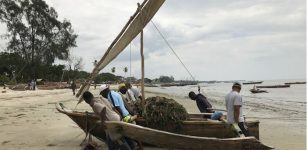 First Detailed Academic Study Of East African Maritime Traditions Shows Changes In Boatbuilding
Archaeology | May 11, 2022
First Detailed Academic Study Of East African Maritime Traditions Shows Changes In Boatbuilding
Archaeology | May 11, 2022 -
 Viking Treasures Discovered In Chamber Grave In Denmark
Archaeology | Apr 4, 2014
Viking Treasures Discovered In Chamber Grave In Denmark
Archaeology | Apr 4, 2014 -
 Advent: Facts And History About The Christian Season Celebration
Christmas Traditions | Dec 1, 2024
Advent: Facts And History About The Christian Season Celebration
Christmas Traditions | Dec 1, 2024 -
 Fossilized Remains Of A Gigantic Jurassic Pterosaur Unearthed In Oxfordshire, UK
Fossils | Jun 5, 2024
Fossilized Remains Of A Gigantic Jurassic Pterosaur Unearthed In Oxfordshire, UK
Fossils | Jun 5, 2024 -
 Curly Hair Protected The Brain Of Early Humans And Helped It Grow
Human Beginnings | Aug 31, 2023
Curly Hair Protected The Brain Of Early Humans And Helped It Grow
Human Beginnings | Aug 31, 2023 -
 First Peoples Of Japan: Ainu Civilization And Its Unknown Origin
Ancient Mysteries | Oct 18, 2014
First Peoples Of Japan: Ainu Civilization And Its Unknown Origin
Ancient Mysteries | Oct 18, 2014 -
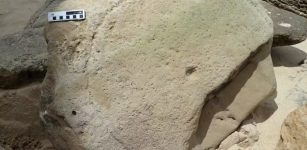 Our Ancestors Made Drawings In The Sand At The Beach 140,000 Years Ago – Scientists Say
Featured Stories | Jul 21, 2023
Our Ancestors Made Drawings In The Sand At The Beach 140,000 Years Ago – Scientists Say
Featured Stories | Jul 21, 2023 -
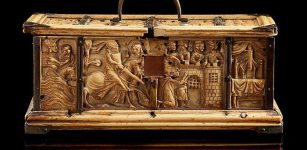 Extremely Rare 700-Year-Old French Gothic Ivory Casket At Risk Of Leaving The UK
Archaeology | Dec 7, 2022
Extremely Rare 700-Year-Old French Gothic Ivory Casket At Risk Of Leaving The UK
Archaeology | Dec 7, 2022 -
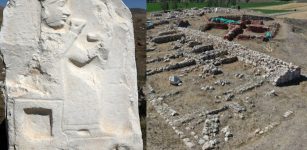 Ancient Hittite Temple Dedicated To The Goddess Of Night To Be Unearthed
Archaeology | Oct 2, 2021
Ancient Hittite Temple Dedicated To The Goddess Of Night To Be Unearthed
Archaeology | Oct 2, 2021


